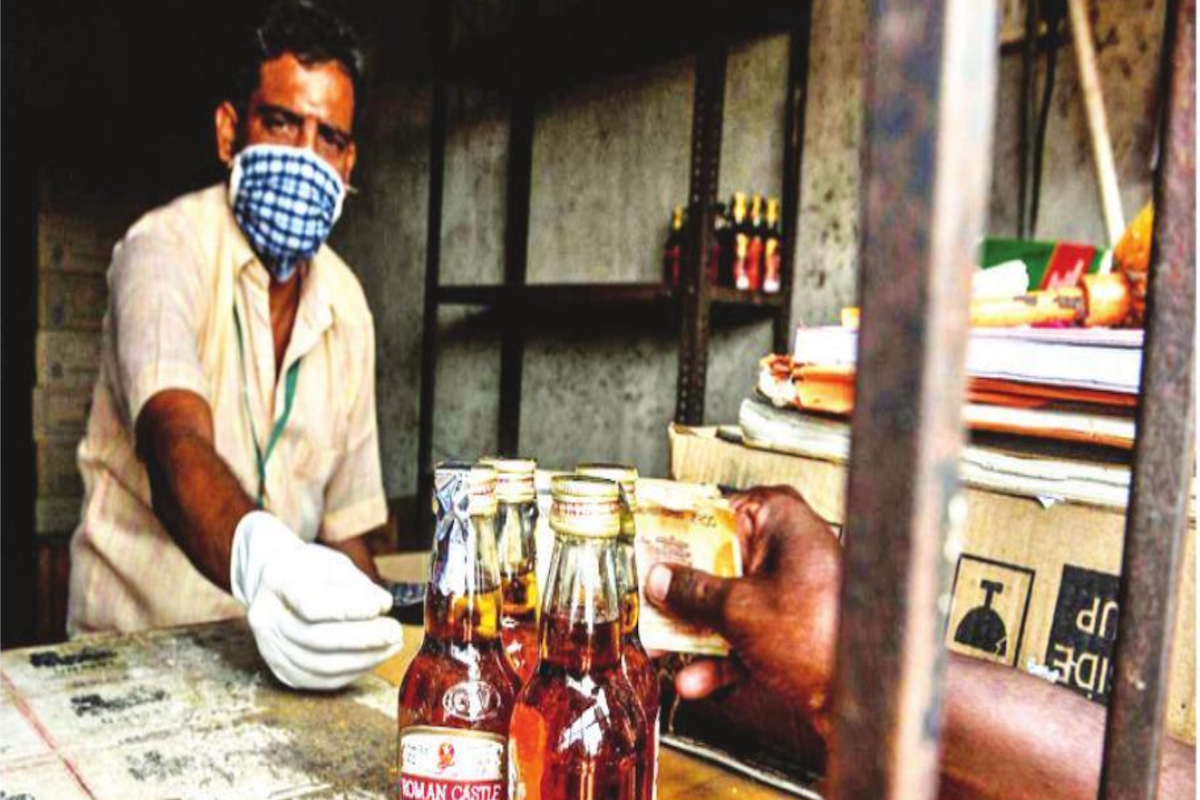Before the liquor-vend came to our village we had a peaceful life. But with the location of a liquor selling point within the village, consumption of liquor increased in a big way. Health problems, violent brawls, and accidents all increased dramatically. We, women, had to bear the major share of the problems as domestic violence and street-level insecurity increased. The liquor shop became a gathering point of goons. It was unsafe even for school- girls to pass that way.”
These are the words of Ramrati, who comes from a poor household in Pather village of Saharanpur district in India. She and other women here had to fight a long battle to remove the vend from their village, but liquor vends continue to spread rapidly in many other villages of India as well as several other Asian countries, endangering the health and devastating many households, particularly the poorer ones. The increasing sales of liquor are led by many liquor mafias and big business interests.
While Sustainable Development Goals commit the world to the reduction of alcohol consumption, the recent trends in Asia have been towards an increase. According to the WHO Status Report on Alcohol and Health, during 2002-2016, the percentage of men drinkers in VietNam increased from 46 to 77 and among women, this increase was from 2 to 11. Within a decade alcohol production increased by 50 per cent in VietNam.
In China, the per capita income consumption of alcohol has increased by 70 per cent since 1990. According to projections made in a recent study published in the Lancet, this is likely to go up by another 40 per cent by 2030, reaching close to 10 litres per capita (of pure alcohol), close to western levels. The Chinese market for alcohol is currently estimated at $175 billion, compared to $252 billion in the USA.
India consumes less alcohol per capita than China, its current level being 5.7 litres per capita (LPC) compared to 7.1 for China. However, its growth from 2.8 in 1990 to 5.7 in 2016 has involved an increase of more than 100 per cent. WHO estimates project an increase to 8 LPC by 2025.
This has already led to a big increase in alcohol-related health and social problems. A figure of 260,000 alcohol-related deaths is often mentioned for India but in fact in WHO documents this is just the addition of alcohol impacts relating to three factors – liver cirrhosis, road accidents and cancer. If all other aspects of health impacted by alcohol are included – about 200 have been identified – along with alcohol-related violence, then the number of deaths in India attributed to alcohol would be well in excess of half a million. In addition, the social adverse impacts in terms of rising in violence, particularly violence against women, have become extremely serious.
Increasing evidence has emerged in recent years regarding the more devastating impact of alcohol among poorer people. This is the reason why the per capita consumption of alcohol may be lowest in parts of Africa and highest in Europe, but the consequences of alcohol in Africa are much more distressing.
In poor communities, women who toil hard for the family to make both ends meet have become increasingly distressed, and angry, at the devastation in their lives brought by increasing alcohol consumption. In several places in India, women have launched fierce movements for removing liquor vends from their villages. Jahnvi Tiwari played a leading role in one such movement in Pather village in north India and was beaten by the local police for this to such an extent that she had to be hospitalised. She says, “What women in poor communities find most difficult to bear is when the education of their children gets disrupted due to their father wasting the limited family income on booze. They themselves have to often go hungry as scarce funds are lost to liquor, and to top it all they also get beaten up when they protest.”
So Jahnvi joined several women of her village in the course of a struggle which lasted for several months but eventually succeeded in evicting the liquor vend from the village.
Not all these movements end successfully, however, as many liquor contractors are close to politicians and police officials. Hence repression has been unleashed against several movements. Several state governments in India have become so dependent on revenue earned from liquor sales that they go on opening more and more liquor vends even in very remote villages. Clearly, this should change.
There is an urgent need for governments to change their liquor policy and to support community actions against alcohol. The important role of social reform and community actions must be recognized. Mere legal actions by the government against alcohol are never adequate in themselves and even though well-intended can often result in several negative and undesirable consequences as well.
Perhaps the best impact of people’s reform movements, often led by women, was seen in the course of the freedom movement in India, under the leadership of Mahatma Gandhi who held alcohol to be the devil’s brew. Memories of this were revived in the course of a struggle of the iron- ore miners of Dalli-Rajhara during 1977-1990 when nearly 10,000 workers made a determined and successful effort to drive away alcohol from their midst and instead devoted their evenings to building a workers’ hospital and participate in cultural activities. Inquiries in subsequent years revealed that the workers had indeed succeeded in retaining their anti- liquor achievement for a considerable period. We certainly need more such efforts.
(The writer is Convener, Campaign to Save Earth Now. His recent books include Man Over Machine and Protecting Earth For Children.)











